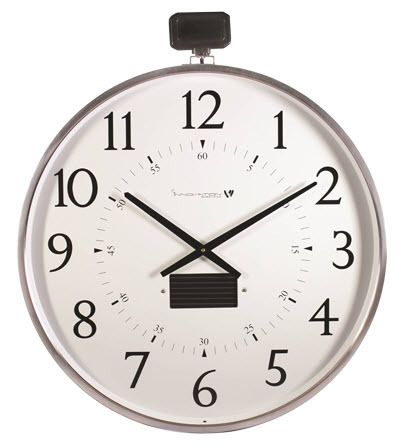 To wirelessly integrate clock systems is an advanced method that assists coordinate purchases and communications in the most effective and also reliable fashion feasible. To integrate clocks, bells, and tones wirelessly calls for implemented the correct equipment for ensuring synchronicity regardless of the variety of timekeeping tools. This post ought to aid the user to walk through this procedure.
To wirelessly integrate clock systems is an advanced method that assists coordinate purchases and communications in the most effective and also reliable fashion feasible. To integrate clocks, bells, and tones wirelessly calls for implemented the correct equipment for ensuring synchronicity regardless of the variety of timekeeping tools. This post ought to aid the user to walk through this procedure.
Why integrate the clocks wirelessly in contrast to utilizing a hardwired facilities? This is a great question considering that performance is apt to be indistinguishable between the two methods. Yet there are some clear advantages for going the cordless option.
For one, it is much more expensive to mount that wired infrastructure, and it can be disruptive to operations. On the other hand, the cost of installing a cordless system is almost minimal.
The wired system is additionally considerably less flexible. The cables require some amount of upkeep, and also repair services, substitutes, or upgrades are tough to achieve without a problem. Once more, wireless clock systems can be updated effortlessly, swiftly, and also inexpensively.
Bear in mind that supervisors need and expect clock synchronization to instill their entire plant or institution. Every last timepiece (and there could be hundreds) have to remain in sync with every other one for the system to be efficient. All the bells must sound at once, and all the tones have to seem in unison.
There are roughly three categories of motivation for integrating. One is to smooth purchases and also interactions, such as handing off partly finished items to the following phase in an assembly line.
A 2nd inspiration is to enhance process circulation, such as a college arranging for a whole pupil body to switch class in between periods. The 3rd category is to prevent any type of unintended mistiming in the recording of vital conventions, such as the local time medicine is provided to a hospital client.
Without absolute synchrony efficiency breaks down to some degree regardless of the inspiration. Manufacturing purchases experience missteps, process circulation is a little (or a lot) much more disorderly, and also needless mistakes sneak right into health care procedures.
In addition, there are additional, incentive advantages. Administrators find that when they synchronize their firm processes specifically, job metrics are much more exact, hence giving them a better understanding of procedures as well as enabling them to identify traffic jams in critical paths. The result is cutting-edge thinking and functional renovations.
So just how do we wirelessly synchronize all timepieces throughout a huge facility? Clearly it can't be come close to in the same way you would integrate two watches, that is, mechanically, as this would be a lot too inaccurate. Neither can the clocks be integrated sequentially.
Wireless clocks for business
Wireless clocks for business
The ideal technique is a broadcast signal sent all over at the same time from a single source. It is electronic, not mechanical. Additionally, each obtaining timekeeper must be geared up with the means to "hear" this signal, and it potentially might need to recognize receipt with a return signal.
The broadcast signal is not binary. It includes an information packet specifying the correct time. Each timekeeper has to put the gotten signal into activity by setting itself to the given time.
The concern after that develops regarding purchasing an entirely brand-new system versus reusing alreadying existing devices. If alreadying existing clocks and also bells are used, they need to be able to reply to programs. They need to be settable electronically and also there has to be a system for equating the program into the suitable activity.
Bells as well as tones are already appropriate to be regulated during relays of some type, so they might be much more easily adjusted to a brand-new clock system. Simply put, there is not a clear answer to the concern that applies to every person. However by taking note of all of the problems we have actually pointed out, the visitor ought to have the ability to determine the right course of action in his or her specific case.
Wireless integrated clock systems are additionally capable of including extra peripheral equipment besides clocks and also bells. Rather than merely tones, one may intend to make use of tone generators for more adaptability. Each distinctive tonal pattern can be connected with its own one-of-a-kind meaning.
Of great appeal nowadays are message boards, one more type of potential element. They are effective in interacting during a part of workers without banging that had interrupt others. You see them in many different kinds and for an expanding collection of varied applications.
It pays to take the time to think about these extras when thinking about synchronization for the office. The system can be tailored quite a bit, as well as one intends to benefit from everything it has to supply if efficiency can be even more enhanced and/or staff member stress reduced.
Certainly, it is unreasonable to expect plant supervisors as well as systems administrators to take on the setup of a wireless clock system by themselves. They will certainly wish to work with professional counsel along these lines, and also the professionals they deal with will certainly be able to give extra guidelines in what components should agree with for their demands.
However an integral part of the procedure is to understand the ideal questions to ask. That indicates gaining as much understanding regarding integrated clocks as well as exactly how they work as possible. We hope that we have taken you a considerable means down the road to that understanding.
No comments:
Post a Comment